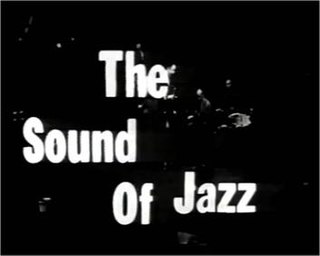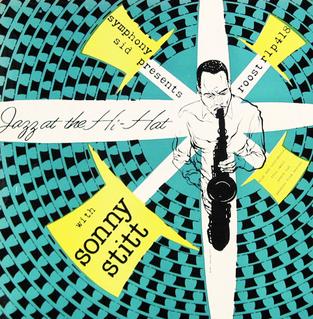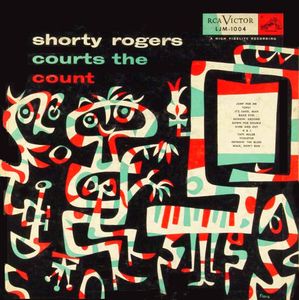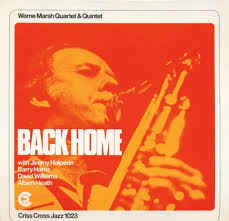Related Research Articles

William James "Count" Basie was an American jazz pianist, organist, bandleader, and composer. In 1935, he formed the Count Basie Orchestra, and in 1936 took them to Chicago for a long engagement and their first recording. He led the group for almost 50 years, creating innovations like the use of two "split" tenor saxophones, emphasizing the rhythm section, riffing with a big band, using arrangers to broaden their sound, and others. Many musicians came to prominence under his direction, including the tenor saxophonists Lester Young and Herschel Evans, the guitarist Freddie Green, trumpeters Buck Clayton and Harry "Sweets" Edison, plunger trombonist Al Grey, and singers Jimmy Rushing, Helen Humes, Thelma Carpenter, and Joe Williams.

Carlos Wesley "Don" Byas was an American jazz tenor saxophonist, associated with swing and bebop. He played with Count Basie, Duke Ellington, Art Blakey, and Dizzy Gillespie, among others, and also led his own band. He lived in Europe for the last 26 years of his life.

"The Sound of Jazz" is a 1957 edition of the CBS television series The Seven Lively Arts and was one of the first major programs featuring jazz to air on American network television.

Lester Willis Young, nicknamed "Pres" or "Prez", was an American jazz tenor saxophonist and occasional clarinetist.

The Count Basie Orchestra is a 16- to 18-piece big band, one of the most prominent jazz performing groups of the swing era, founded by Count Basie in 1935 and recording regularly from 1936. Despite a brief disbandment at the beginning of the 1950s, the band survived long past the big band era itself and the death of Basie in 1984. It continues under the direction of trumpeter Scotty Barnhart.
From Spirituals to Swing was the title of two concerts presented by John Hammond in Carnegie Hall on 23 December 1938 and 24 December 1939. The concerts included performances by Count Basie, Benny Goodman, Big Joe Turner and Pete Johnson, Helen Humes, Meade Lux Lewis, Albert Ammons, Mitchell's Christian Singers, the Golden Gate Quartet, James P. Johnson, Big Bill Broonzy and Sonny Terry.

Herschel "Tex" Evans was an American tenor saxophonist who was a member of the Count Basie Orchestra. He also worked with Lionel Hampton and Buck Clayton. He is also known for starting his cousin Joe McQueen's interest in the saxophone. Joe McQueen, living until 2019 at age 100, may well have been the last surviving person to have known Herschel during his lifetime.

"One O'Clock Jump" is a jazz standard; a 12-bar blues instrumental, written by Count Basie in 1937.

Count Basie at Newport is a live album by jazz musician Count Basie and his orchestra. It was originally issued as Verve MGV 8243 and included only the tracks 1-7 and 13. Tracks 9-12 originally included in Count Basie & Joe Williams/Dizzy Gillespie & Mary Lou Williams at Newport.

Sound Venture is a jazz album recorded by Georgie Fame and the Harry South Big Band in 1966. Featuring many of Britain's top jazz musicians, and arranged by big band arranger Harry South, it marked a departure from Fame's R&B hits with the Blue Flames. The record peaked at number 9 on the national albums chart in the UK.

First Time! The Count Meets the Duke is an album by American pianists, composers and bandleaders Duke Ellington and Count Basie with their combined Orchestras recorded and released on the Columbia label in 1961.

One Night Stand is a compilation of a concert given on November 8, 1947, at The Town Hall in New York City. The concert featured Sarah Vaughan and Lester Young. The album was released in 1997. Lester Young is a tenor saxophonist who played with the Count Basie Band in the 1930s and 1940s. It is with this group that he first recorded the first copy of "Lester Leaps In" in 1939.

Farmer's Market Barbecue is a 1982 studio album by Count Basie and his orchestra.

Swing jazz emerged as a dominant form in American music, in which some virtuoso soloists became as famous as the band leaders. Key figures in developing the "big" jazz band included bandleaders and arrangers Count Basie, Cab Calloway, Jimmy and Tommy Dorsey, Duke Ellington, Benny Goodman, Fletcher Henderson, Earl Hines, Glenn Miller, and Artie Shaw. Duke Ellington and his band members composed numerous swing era hits that have become standards: "It Don't Mean a Thing " (1932), "Sophisticated Lady" (1933) and "Caravan" (1936), among others. Other influential bandleaders of this period were Benny Goodman and Count Basie.

Jazz at the Hi-Hat is a live album by saxophonist Sonny Stitt recorded in Boston in 1954 and originally released on the Roost label as a four track 10 inch LP. The original album has been expanded with additional material and released on CD in two volumes.

The Original American Decca Recordings is a 1992 compilation 3-CD set of sessions led by jazz bandleader Count Basie recorded for the Decca label between 1937 and 1939.

Count Basie Story is a double album by pianist, composer and bandleader Count Basie featuring tracks originally performed by his orchestra in the 1930s and 1940s rerecorded in 1960 as a celebration of its 25th anniversary and first released on the Roulette label. Selections from the 2-LP set were also released as Roulette's The Best of Basie in 1962 and The Best of Basie Vol. 2 in 1964. The album was rereleased with bonus tracks in 2004 to commemorate Basie's 100th birthday.

Pres and Sweets is an album by American jazz saxophonist Lester Young and trumpeter Harry Edison recorded in 1955 and originally released on the Norgran label.

Shorty Rogers Courts the Count is an album by American jazz trumpeter, composer and arranger Shorty Rogers, released on the RCA Victor label in 1954.

Back Home, is an album by saxophonist Warne Marsh, recorded in 1986 and released on the Dutch Criss Cross Jazz label.
References
- ↑ Brian Rust, Jazz and Ragtime Records, 1897-1942 Archived 2009-02-09 at the Wayback Machine , Mainspring Press, 2008.
- ↑ "Lester Leaps In (1940)", JazzStandards.com.
- ↑ "Lester Leaps In (1939)", at Three Perfect Minutes, retrieved 2013-10-23.
- ↑ Lester Leaps In (1939) Archived 2013-09-27 at the Wayback Machine , at jazz.com Archived November 21, 2015, at the Wayback Machine , retrieved 2013-10-23.